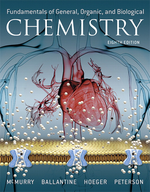?Ammonia is synthesized industrially by reaction of nitrogen and hydrogen according to
Chapter 7, Problem 7.10(choose chapter or problem)
Ammonia is synthesized industrially by reaction of nitrogen and hydrogen according to the equation \(3 \mathrm{H}_{2}(g)+\mathrm{N}_{2}(g) \longrightarrow 2 \mathrm{NH}_{3}(g)\). The free-energy change for this reaction is \(\Delta G=-16 \mathrm{~kJ} / \mathrm{mol}\), yet this reaction does not readily occur at room temperature. List three ways to increase the rate of this reaction.
Text Transcription:
3 H_2(g)+N_2(g) longrightarrow 2 NH_3(g)
Delta G=-16 ~kJ/mol
Unfortunately, we don't have that question answered yet. But you can get it answered in just 5 hours by Logging in or Becoming a subscriber.
Becoming a subscriber
Or look for another answer
